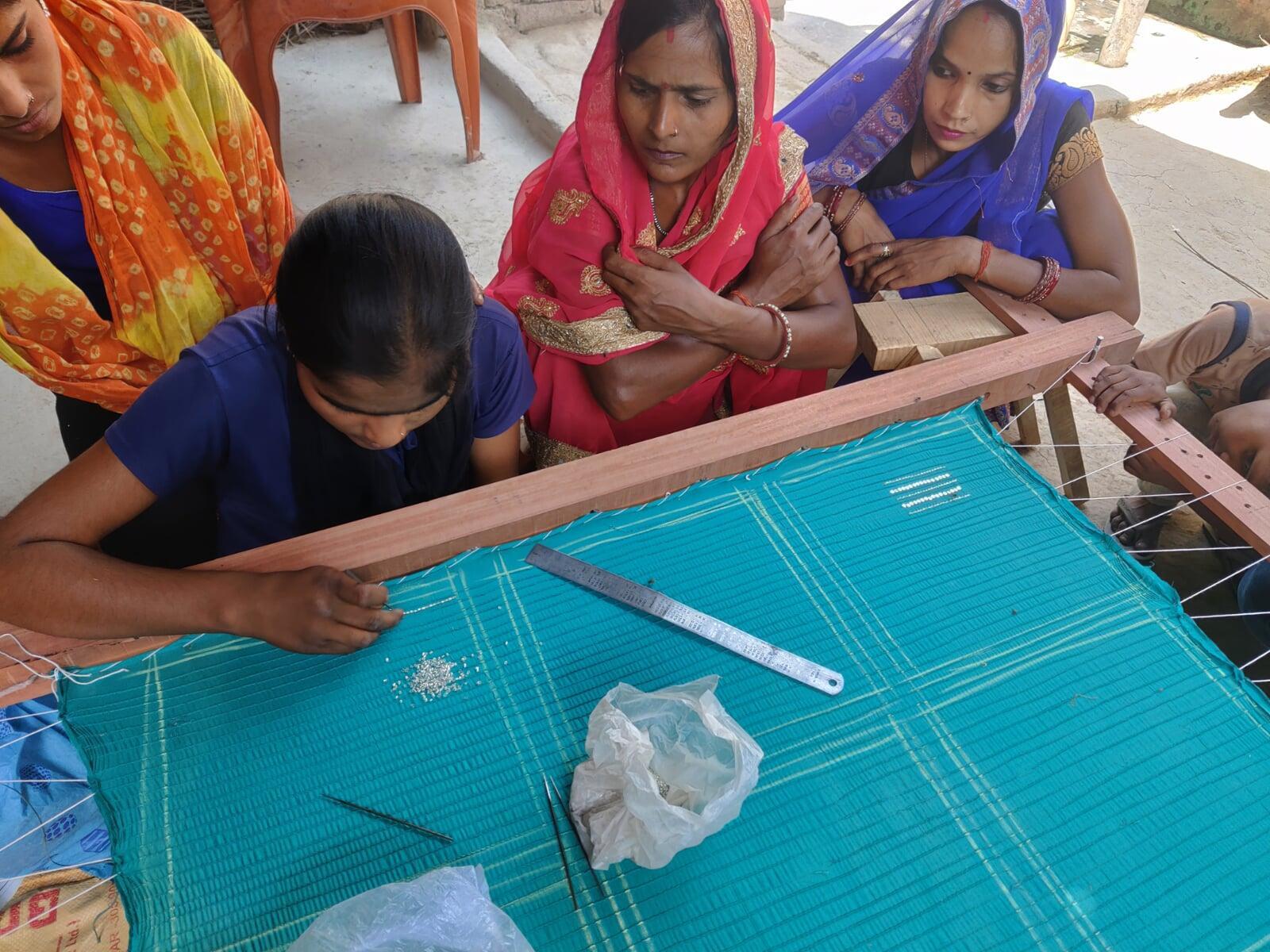
Zardozi, an intricate form of metallic embroidery, has adorned royal garments, tapestries, and ceremonial attire for centuries. Rooted in Indian heritage, this exquisite craft has evolved through the ages, blending traditional artistry with contemporary designs to become a symbol of timeless elegance. Let’s delve into the fascinating journey of Zardozi, its transformation, and how modern initiatives are fostering sustainable livelihoods for women artisans through allied crafts like crochet.
The Origins of Zardozi: A Royal Legacy
Zardozi derives its name from the Persian words zar (gold) and dozi (embroidery). Introduced to India during the Mughal era, it flourished under the patronage of Emperor Akbar. The royal courts were graced with stunning Zardozi work, featuring intricate patterns made with gold and silver threads, embellished with pearls, beads, and sequins. This art form symbolized luxury and exclusivity, reserved for the elite and nobility.
Zardozi and the Artisan Community
Despite its royal origins, Zardozi has always been deeply connected to grassroots artisans, especially women. Over time, it became an essential livelihood for many families. Much like the crochet movement in India, Zardozi offered a way for women to contribute economically while preserving their cultural heritage.
Empowering Women Through Craftsmanship
In modern India, women empowerment programs and CSR-funded projects for women have played a pivotal role in reviving traditional crafts like Zardozi and crochet. Organizations like the Mon Ami Foundation are at the forefront of these initiatives, promoting sustainable livelihoods for women through skill-building programs, self-help groups, and market linkages for artisans. By integrating inclusive growth and sustainability principles, these programs enable women to achieve financial independence.
The Transition to Modern Fashion
As time progressed, Zardozi transitioned from royal attire to modern fashion, becoming a popular choice for bridal wear, couture collections, and luxury home decor. Designers worldwide now incorporate Zardozi into contemporary styles, showcasing its versatility and appeal.
Similarly, handcrafted crochet products have gained popularity for their eco-friendly crafting initiatives. The synergy between these crafts reflects a broader trend toward sustainable crafting initiatives, focusing on livelihood enablement in India and empowering women through crochet and Zardozi.
Sustainability and Livelihood Enablement
Both Zardozi and handmade crochet products contribute to sustainable crafting initiatives. Women artisans involved in these crafts often participate in livelihood programs for women, which emphasize eco-friendly practices. Through these programs, women are trained in both traditional and modern techniques, creating a balance between preserving heritage and embracing innovation.
The Mon Ami Foundation crochet initiatives exemplify this model by providing artisans with tools and training while facilitating market access. These efforts align with corporate social responsibility in India, promoting sustainable livelihoods for women and fostering inclusive growth.
The Role of Self-Help Groups
Self-help groups for women artisans are instrumental in preserving Zardozi and crochet craftsmanship. These groups create a supportive environment where women can share resources, learn new skills, and collectively market their products. By collaborating with CSR-funded projects for women, these groups contribute to the broader goal of empowering women through craft.
Future Prospects: Merging Tradition with Modernity
The revival of Zardozi and crochet reflects a growing appreciation for handmade artistry. With the support of livelihood programs for women and sustainable crafting initiatives, these art forms continue to thrive. By creating eco-friendly crafting initiatives and leveraging corporate social responsibility in India, organizations like Mon Ami Foundation are ensuring that these crafts remain relevant while providing artisans with economic opportunities.
